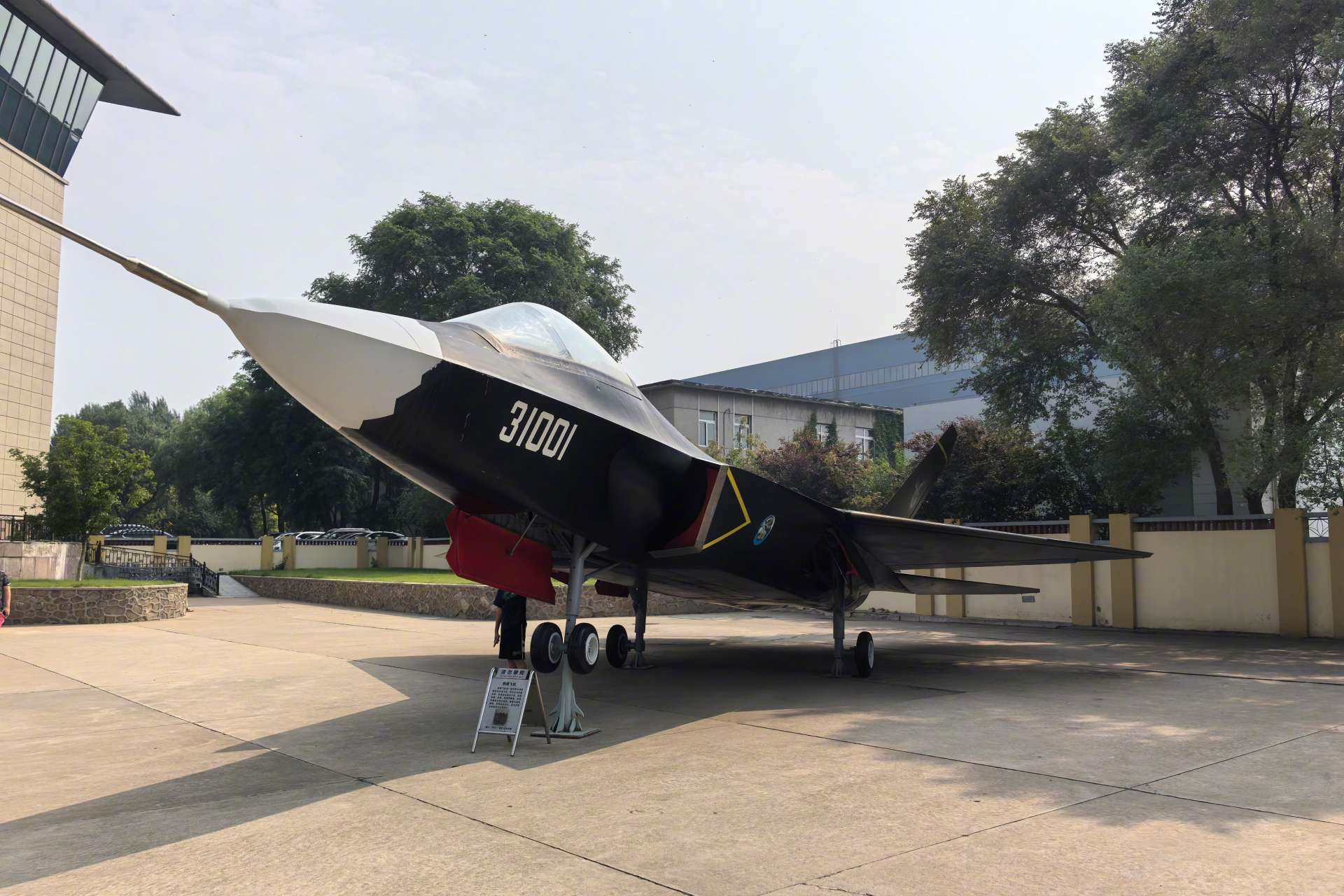Breaking News
Pakistan trains pilots on Chinese J-31 stealth fighters to counter India's Rafale jets.
According to the Pakistani TV network BOL News on July 30, 2024, as well as Raad on August 1, 2024, Pakistan has begun training its fighter pilots on the Chinese Shenyang FC-31, also known as the J-31, a fifth-generation stealth multirole fighter developed by the Shenyang Aircraft Corporation (SAC). This development is part of a broader initiative by the Pakistan Air Force (PAF) to modernize its fleet and improve its operational readiness, particularly in the context of its ongoing rivalry with India.
Follow Army Recognition on Google News at this link

By inducting the Chinese J-31 stealth aircraft, the Pakistan Air Force (PAF) continues its pursuit of advanced military technology, aiming to sustain a regional balance of power, particularly with India. (Picture source: Chinese social media)
The Pakistan Air Force (PAF)'s focus on acquiring advanced military technology comes in response to India's progress in developing its own air capabilities. To address this, Pakistan has already integrated several Chinese-origin platforms, including J-10C fighter jets, advanced radar systems, and missile technologies, into its air force. The induction of the Chinese J-31 stealth aircraft represents a continuation of this trend, aimed at maintaining a balance of power in the region.
The rivalry between the Pakistani Air Force (PAF) and the Indian Air Force (IAF) is rooted in their historical conflicts and ongoing strategic competition. Both nations have prioritized modernizing their air fleets, with Pakistan introducing the JF-17 Block III, developed in collaboration with China, while India has invested in aircraft such as the locally-made Tejas and the French-made Rafale. The competition extends beyond technology to strategic positioning, with each air force aiming to maintain an edge through international collaborations and enhancing combat readiness. The rivalry has been marked by significant events like the aerial engagements in 2019, which highlighted the ongoing tension and the importance each country places on air superiority in the region.
The J-31, also known as the FC-31 Gyrfalcon or J-35, is a fifth-generation stealth multirole fighter developed by bot SAC and AVIC. The aircraft is designed to enhance air combat capabilities with its advanced stealth features, situational awareness, and munitions loadout. Comparisons have been drawn between the J-31 and the U.S. F-35, as both aircraft offer similar technological advancements. The acquisition of the J-31 is expected to be a key component of Pakistan's strategy to ensure its air force remains competitive in the region.

Comparisons have been made between the J-31 and the U.S. F-35, with some speculation that the design of the J-31 may have been influenced by data allegedly obtained through cyber espionage related to the F-35. (Picture source: Chinese social media)
The development of the J-31 by the Shenyang Aircraft Corporation (SAC) and the Aviation Industry Corporation of China (AVIC) has been closely monitored by defense analysts. The aircraft first gained attention in 2011 when images of a model labeled as the F-60 surfaced online, leading to speculation about its capabilities and market intentions. Initially, the J-31 was developed as an export-oriented fighter without direct funding from the People's Liberation Army (PLA). The prototype's first public appearance occurred in 2012, generating further interest in the aircraft.
The J-31 was officially unveiled at the China International Aviation & Aerospace Exhibition in November 2014, where SAC disclosed that the project had been self-funded. The aircraft's design, which includes forward-swept intake ramps, diverterless supersonic inlet (DSI) bumps, and oblique vertical stabilizers, is intended to make it competitive in the global market.
Over the course of its development, the J-31 has undergone several design revisions and testing phases. While initially positioned for export, the aircraft has also attracted interest from the PLA, particularly the People's Liberation Army Navy (PLAN). The PLAN is considering a carrier-based variant of the J-31, often referred to as the J-35, which conducted its maiden flight on October 29, 2021. This naval version includes modifications such as a catapult launch bar and folding wings designed for carrier operations.

While initially positioned for export, the aircraft has also attracted interest from the Chinese forces, particularly the People's Liberation Army Navy (PLAN). (Picture source: Chinese social media)
The development of the J-31 has been subject to controversy, particularly concerning reports in 2009 that Chinese hackers had accessed sensitive information from the U.S. Joint Strike Fighter program. There has been speculation that this data may have influenced the J-31's design. However, some Russian aviation experts have characterized the J-31 as an indigenous design, distinct from existing Western aircraft.
The J-31 is expected to achieve a maximum speed of Mach 1.8 at high altitude, with a service ceiling of 16,000 meters. Its combat radius is reported to be around 1,200 kilometers, extendable to 1,900 kilometers with aerial refueling. The aircraft is designed to carry up to 8,000 kilograms of munitions on both internal and external hardpoints, but while the Rafale (in service with India) is a reliable and battle-tested platform, the FC-31 represents China's push into the next generation of stealth fighters, though it still has to prove its capabilities in real-world operations.
The Rafale, a 4.5-generation fighter developed by France, is known for its multirole capabilities, with extensive combat deployment across various global conflicts. It combines advanced avionics with a wide range of armaments, making it adaptable to different missions. The FC-31 Gyrfalcon, a Chinese fifth-generation stealth fighter, aims to offer advanced stealth features and modern avionics, with an emphasis on air-to-air and air-to-ground operations. While the Rafale has a well-documented service record, the FC-31, still in development, represents China's push to compete in the stealth fighter category but lacks operational experience.

The J-31 is expected to achieve a maximum speed of Mach 1.8 at high altitude, with a service ceiling of 16,000 meters, while its combat radius is reported to be around 1,200 kilometers, extendable to 1,900 kilometers with aerial refueling. (Picture source: Chinese social media)


























